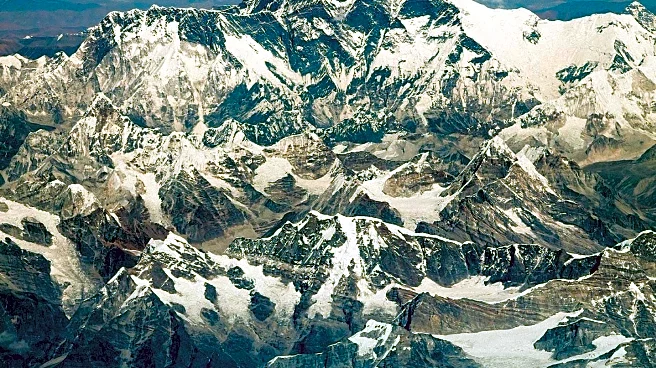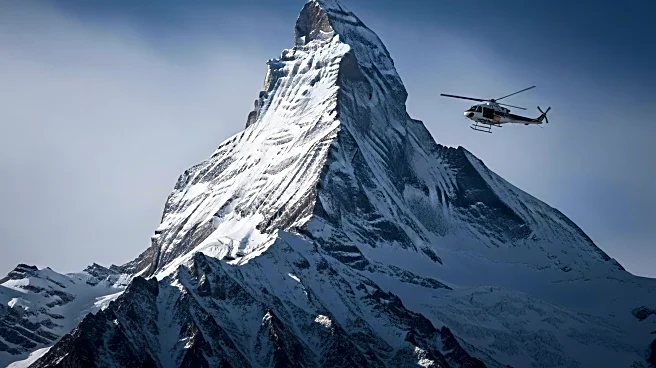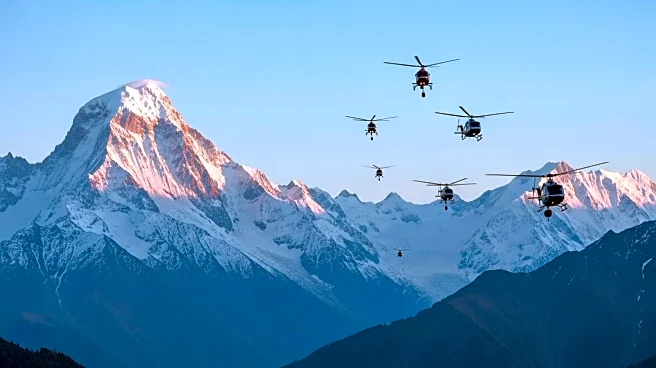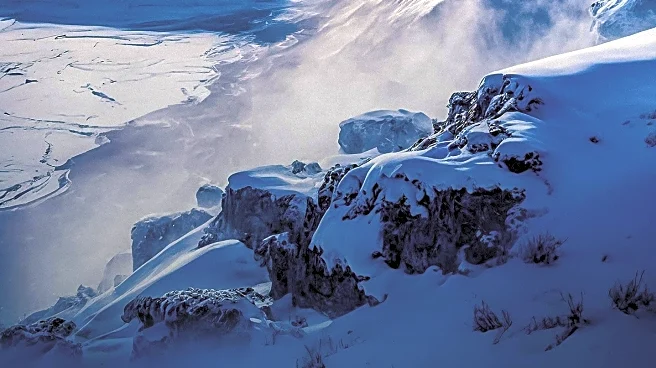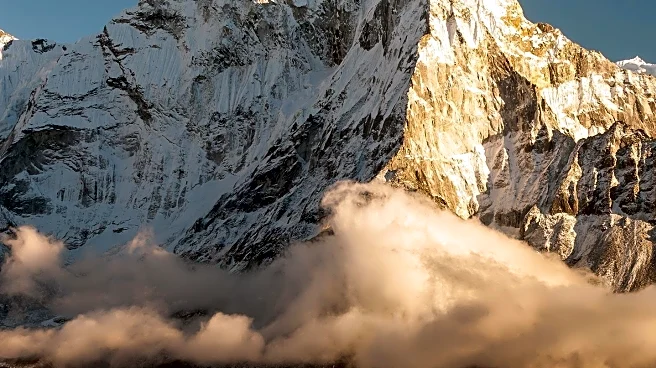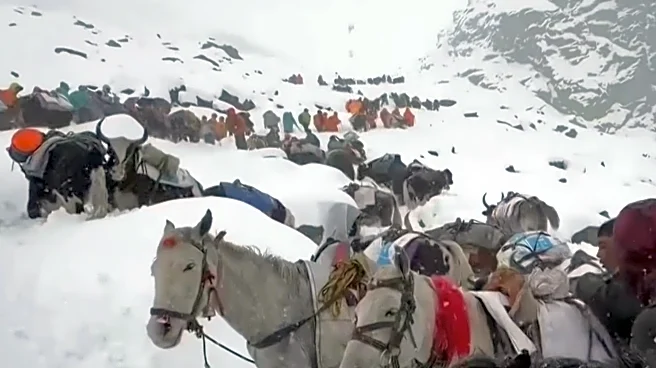What's Happening?
A severe snowstorm has trapped hundreds of hikers at tourist campsites on the slopes of Mount Everest in Tibet. According to Chinese state media, approximately 350 hikers have reached a meeting point in Tingri County, while rescuers are in contact with another 200 individuals. The hikers were caught at an elevation of over 16,000 feet, with reports indicating that the snow was three feet deep, crushing tents and complicating rescue efforts. The snowstorm coincided with a weeklong national holiday in China, a period when many people travel domestically and internationally. In a separate incident in Qinghai province, one hiker died from hypothermia and altitude sickness, and 137 others were evacuated due to similar weather conditions.
Why It's Important?
The snowstorm on Mount Everest highlights the risks associated with high-altitude hiking and the challenges faced by rescue operations in extreme weather conditions. The incident underscores the importance of preparedness and the potential dangers of tourism in remote and mountainous regions. The situation also draws attention to the impact of natural disasters on tourism, a significant economic sector for regions like Tibet. The rescue efforts demonstrate the logistical challenges and the need for coordinated responses in such emergencies. The incident may prompt a reevaluation of safety protocols and regulations for hiking and tourism in high-risk areas.
What's Next?
Rescue operations are ongoing, with hundreds of rescuers working to clear paths and assist trapped hikers. The situation may lead to increased scrutiny of safety measures and regulations governing tourism in high-altitude regions. Authorities might implement stricter guidelines to prevent similar incidents in the future. The outcome of the rescue efforts will likely influence future policies and preparedness strategies for handling emergencies in remote and challenging environments.
Beyond the Headlines
The incident on Mount Everest also highlights broader issues related to climate and environmental changes affecting mountainous regions. The unpredictability of weather patterns poses significant risks to both local communities and tourists. Additionally, the economic implications for the tourism industry in Tibet and surrounding areas could be substantial, as safety concerns may deter future visitors. The event may also spark discussions on sustainable tourism practices and the balance between economic development and environmental preservation.



